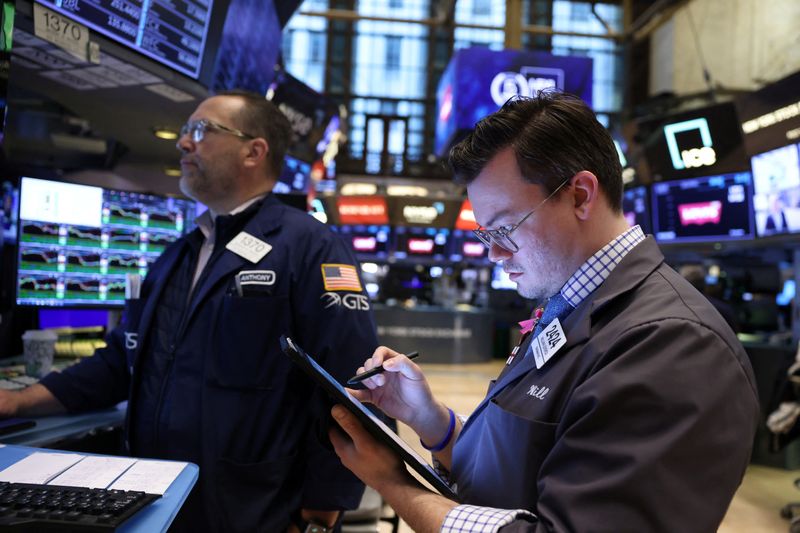By Stephen Culp
NEW YORK (Reuters) -U.S. stocks tumbled to a lower close on Wednesday after hotter-than-expected inflation data threw cold water on hopes that the Federal Reserve would begin cutting interest rates as early as June.
All three major U.S. stock indexes veered sharply lower at the opening bell after the Labor Department's Consumer Price Index (CPI) report landed north of consensus, a reminder that inflation's road back down to the Fed's 2% target will remain a long and meandering one.
"The stickiness of inflation data caused a 'sell first ask questions later' mentality," said Ryan Detrick, chief market strategist at Carson Group in Omaha. "And that disappointment caused a push-back on not only the potential timing of the first rate cut but how many we’re going to get."
Minutes from the Fed's March policy meeting reflected concerns that inflation's progress toward that target might have stalled, and restrictive monetary policy may need to be maintained for longer than anticipated.
"Just a week ago (Fed Chairman Jerome) Powell hinted at three cuts," Detrick added. "One has to wonder if his opinion has changed after the stubborn data we continue to see."
Equity prices were further pressured by benchmark Treasury yields, which breached 4.5% to touch the highest level since November.
Interest rate-sensitive stocks were hardest hit, with real estate primed for its biggest one-day percentage drop since June 2022.
Housing stocks registered their biggest daily decline since Jan. 23 and the Russell 2000 notched its steepest one-day slide since Feb. 13.
"Anything related to rates has clearly been hit hard today, from real estate to housing to small caps," Detrick said.
Financial markets have now priced in a dwindling 16.5% likelihood of a 25 basis point Fed rate cut in June, down from 56.0% just prior to the report's release, according to CME's FedWatch tool.
The Dow Jones Industrial Average fell 422.16 points, or 1.09%, to 38,461.51, the S&P 500 lost 49.27 points, or 0.95%, to 5,160.64 and the Nasdaq Composite dropped 136.28 points, or 0.84%, to 16,170.36.
Of the 11 major sectors of the S&P 500, all but energy ended red, with real estate shares suffering the steepest decline.
Investors will now focus on Thursday's producer prices report for a clearer picture of March inflation, and the unofficial kick-off of first quarter earnings season. On Friday, a trio of big banks - JPMorgan Chase & Co (NYSE:JPM), Citigroup Inc (NYSE:C) and Wells Fargo & Co - are slated to post results.
Analysts expect aggregate S&P 500 earnings in the first quarter to grow 5.0% from last year, according to LSEG data. That is lower than the 7.2% annual earnings growth for the quarter forecast on Jan. 1.
Most megacap growth stocks slipped with the exception of Nvidia (NASDAQ:NVDA) Inc, which bucked the trend by rising 2.0%.
U.S.-listed shares of Alibaba (NYSE:BABA) advanced 2.2% after the company's co-founder Jack Ma released a memo to employees on expressing support for the internet giant's restructuring efforts - a rare move from the billionaire who has spent the last few years away from the spotlight.
Declining issues outnumbered advancing ones on the NYSE by a 5.93-to-1 ratio; on Nasdaq, a 3.58-to-1 ratio favored decliners.

The S&P 500 posted 4 new 52-week highs and 8 new lows; the Nasdaq Composite recorded 35 new highs and 170 new lows.
Volume on U.S. exchanges was 11.91 billion shares, compared with the 11.52 billion average for the full session over the last 20 trading days.